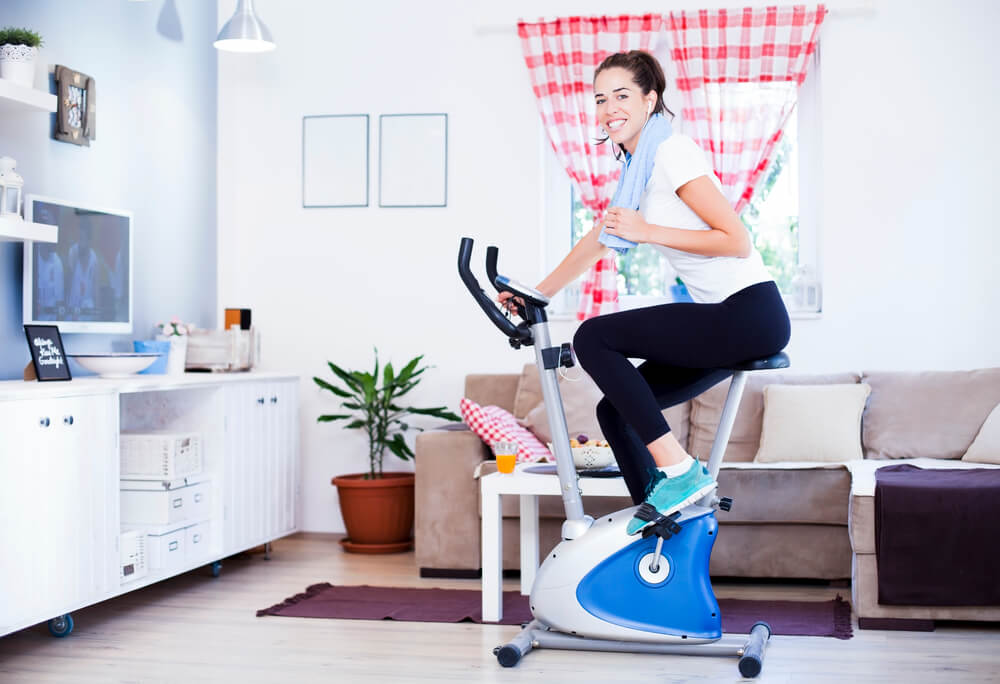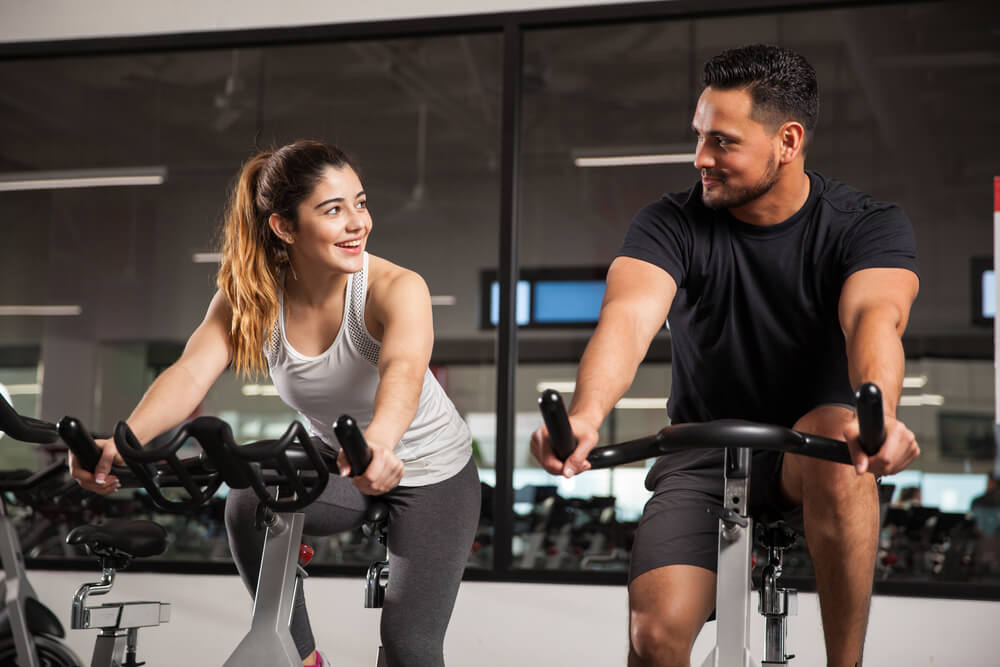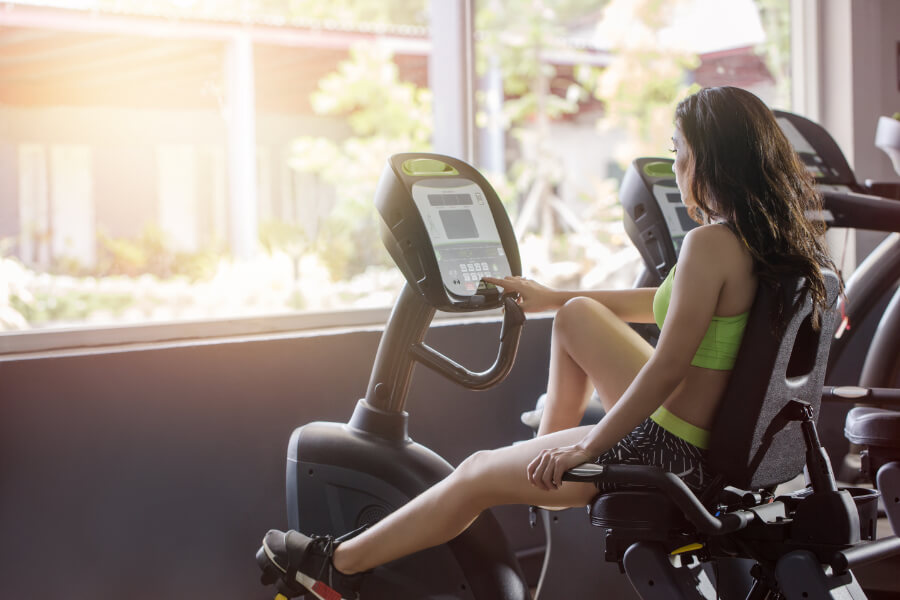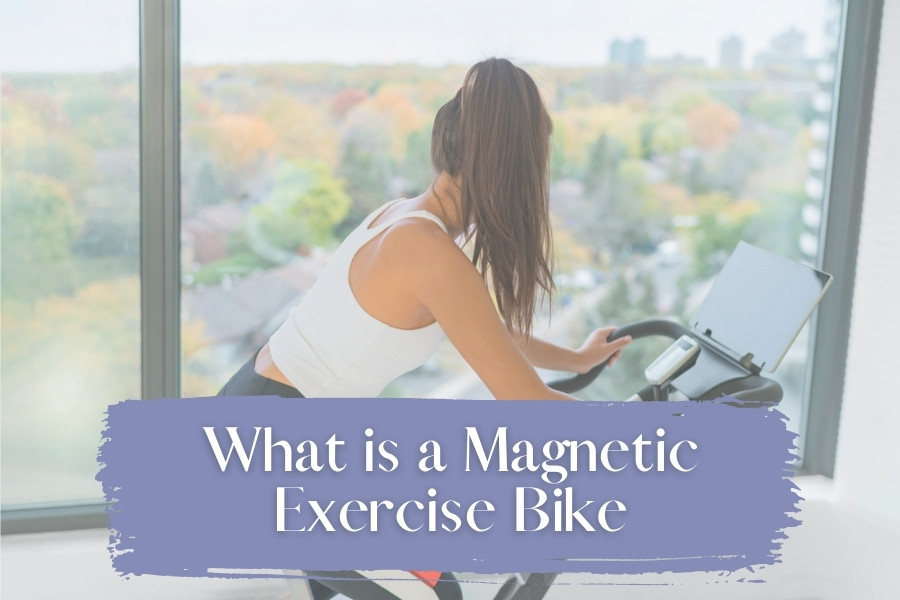Exercise bikes are amazing machines, and they can do so much for you. They can improve your fitness, increase the longevity of your life, help you lose weight, make you feel amazing, and you can even make lots of friends with them. Many people don’t know that there are many different types of magnetic exercise bikes out there; and in this article, we’re going to tell you all about them, explain how the magnetic resistance works and what are the pros & cons of this type of resistance.
What are the different types of Magnetic Exercise Bikes?
There are a few different types of exercise bikes on the market, and typically the main three you will hear about are Upright, Spinning, and Recumbent Bikes. They all do the same job and work as an indoor bike but do it all a little differently.
Upright

The most common type you will see is an upright bike. These are the really comfortable bikes you will find at the gym that many people will sit on to get their cardio in. They call them upright bikes because the position you sit in is very upright, and these are designed to give you maximum comfort when you’re working out. They are sleek in design and are very modern looking but typically quite basic in operation.
Spinning Bikes

Indoor Cycles or Spinning bikes as we called them (actually Spin®, Spinner®, Spinning®, Spin Fitness® are trademarks of Mad Dogg Athletics) are what you will find when you go to a spinning studio. They are stationary bikes that look a lot like road bikes and typically come with a large flywheel in the front or the rear. They are used for group exercise sessions, and you can buy some amazing interactive bikes for your home now, like a Peloton.
Recumbent Bikes

Recumbent bikes are also what you will find at a gym, and they are the bikes where you have a large seat, and the pedals are out in front of you, not under you like a typical exercise bike. These are amazing for comfortable exercising and for taking the pressure off the hips.
What does Magnetic mean?
When the term magnetic is used, it refers to how the resistance is created. Typically spinning bikes would use a friction brake pad to slow down the flywheel and create resistance. On a magnetic spinning bike, this is done by magnetics instead.
How does a Magnetic Exercise Bike work?
In a typical spinning bike, the process is you have a flywheel that attaches to the pedals via a fixed chain or belt. When you start pedaling, the flywheel and the pedals spin together via the crank. Then to create resistance, you use a fixed brake pad to slow the flywheel down, making it tougher on the pedals.
On a magnetic spinning bike, the process is the same up until the brake pad. Instead, you have magnets, and these create an eddy current which slows the flywheel down and creates the resistance. Imagine putting two magnets back to back where they repel. This is what happens at the flywheel. This makes the whole system completely frictionless because the magnets and the flywheel never touch each other. The magnetic system is much more efficient, and it works much better than a traditional brake pad system.
What are the Benefits of a Magnetic Resistance System on an Exercise Bike?
The benefits of a magnetic system are huge, which is how most exercise bike manufacturers are now going. Soon it will be all we will see. What makes a frictionless magnetic system so much better though?
Common Problems with Magnetic Exercise Bikes
Magnetic exercise bikes very rarely go wrong, and as far as fitness equipment goes, they are very reliable, but when they do go wrong, what are the most common issues.
Conclusion

Magnetic exercise bikes are an incredible tool, and we think everyone should have one. They have a huge amount of benefits and are a great way to stay in shape. If you are considering an exercise bike, the best way to go is a magnetic spinning bike.
Read Also:
1. Best Magnetic Spin Bikes (USA)
2. Best Magnetic Spin Bikes (UK)
